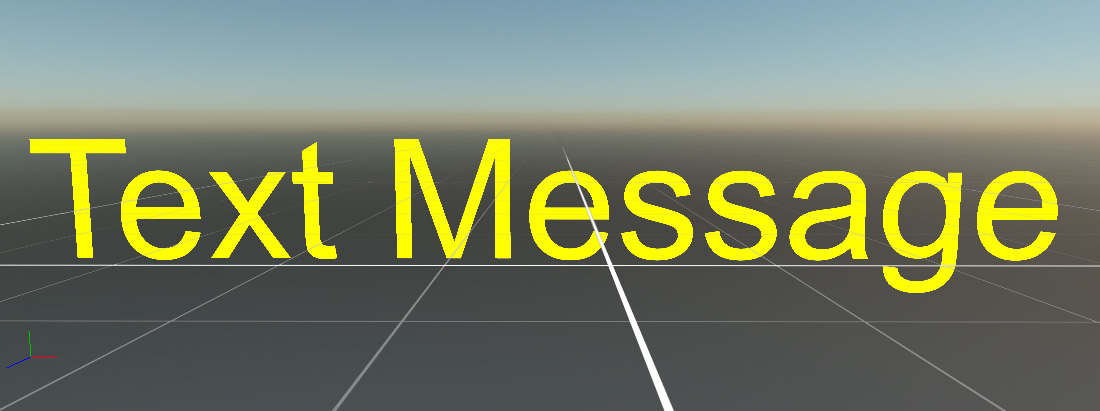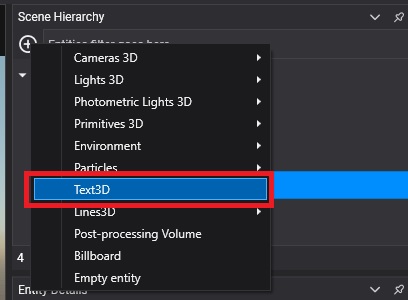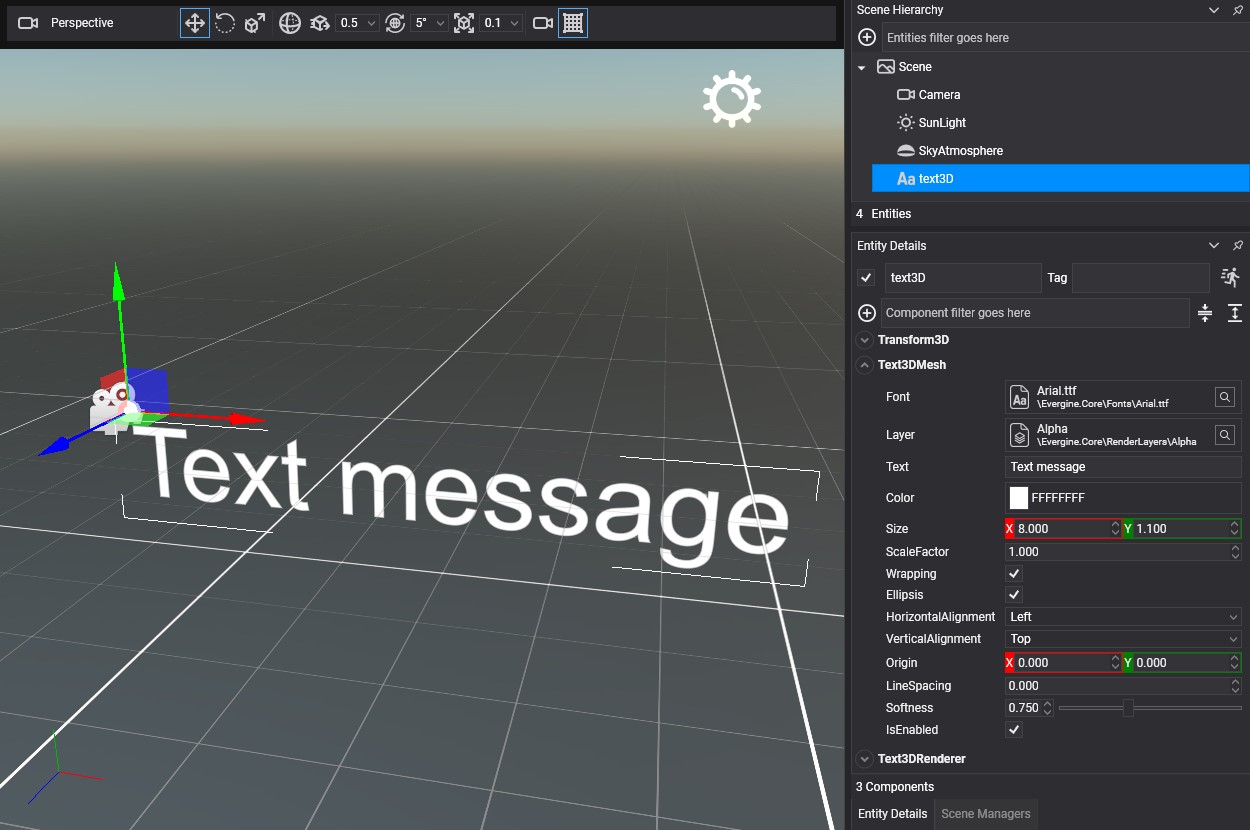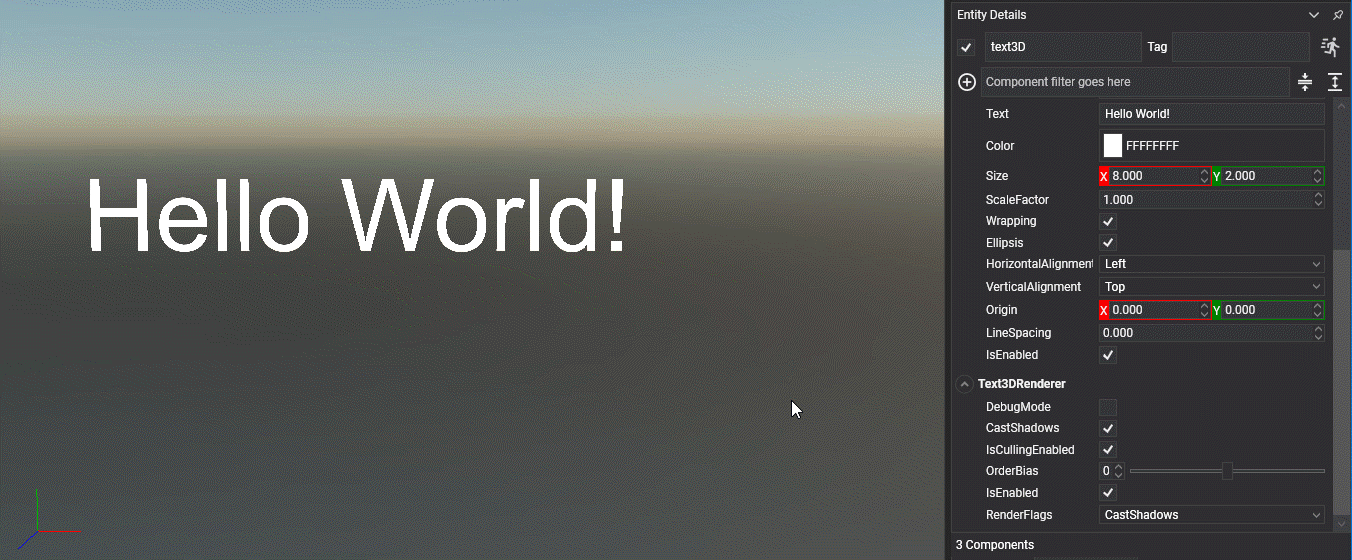Create Text3D
 Text3D is a component that allows you to render text in 3D space. You can render anything from a simple header to a large paragraph, and configure text limits, wrapping, and ellipsis.
Text3D is a component that allows you to render text in 3D space. You can render anything from a simple header to a large paragraph, and configure text limits, wrapping, and ellipsis.
Create a Text3D in Evergine Studio
You can create a Text3D by clicking the ![]() button in the Entity Hierarchy panel to deploy a menu of creation options, and then selecting the "Text3D" option.
button in the Entity Hierarchy panel to deploy a menu of creation options, and then selecting the "Text3D" option.

A Text3D entity will be added to your scene.

In the Text3DMesh component of your Text3D entity, you will find the following properties:
| Property | Description |
|---|---|
| Font | The font asset used (Font family). |
| Layer | RenderLayer used to render the text. |
| Text | The text to be drawn. Use /n to insert a line break. |
| Color | The text color. |
| Size | The canvas size or area. Enable the DebugMode property in the Text3DRenderer component to show this area (blue rectangle). |
| ScaleFactor | The text scale factor. |
| Wrapping | Word wrapping. If this option is enabled, line breaks will be created automatically when the current line doesn't have enough space for more words. |
| Ellipsis | If this option is enabled, three ellipses will be shown at the end of the text when there isn't enough canvas space for additional letters. |
| HorizontalAlignment | Align the text horizontally. The available values are: Left, Center, and Right. |
| VerticalAlignment | Align the text vertically. The available values are: Top, Center, and Bottom. |
| Origin | Configure the origin of the Text3D entity. The value is a vector2 with values between [0-1]. |
| LineSpacing | Configure the space between text lines. |
| Softness | Configure the anti-aliasing effect. The value is a float between [0-2]. |
Create a Text3D from code
The following code shows the list of components necessary to convert an entity into a Text3D entity.
public class MyScene : Scene
{
protected override void CreateScene()
{
var assetsService = Application.Current.Container.Resolve<AssetsService>();
var defaultFont = assetsService.Load<Font>(DefaultResourcesIDs.DefaultFontID);
var text = new Entity()
.AddComponent(new Transform3D())
.AddComponent(new Text3DMesh()
{
Font = defaultFont,
Text = "Hello World!",
})
.AddComponent(new Text3DRenderer());
this.Managers.EntityManager.Add(text);
}
}
The result:

Enable debug mode
Sometimes it is useful to enable the DebugMode property in the Text3DRenderer component to draw the debug information for our Text3D entity. The canvas space will be shown as a blue rectangle. The text space will be shown as a yellow rectangle, and a red point will be rendered on each character origin.
